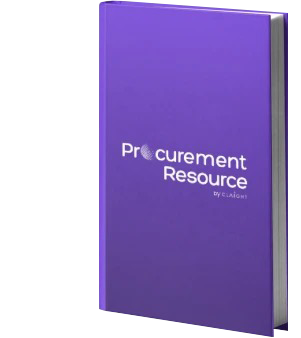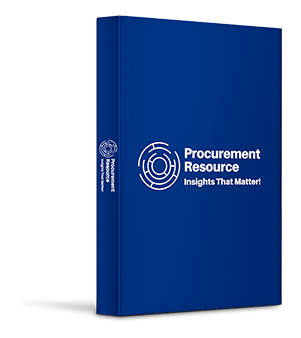Reports

Global Caustic Soda Market: by Application; Country Overview; Value Chain Analysis; Production Process; Trade Analysis; Cost Structure; Market Dynamics: Drivers & Constraints, Industry Events, Innovations & Trends, SWOT Analysis, Porter’s Five Forces; Industry Best Practices: Sourcing Strategy, Procurement Model, Contract Structure, Negotiation Levers, Pricing Model; Key Supplier Analysis, 2024-2032
Caustic Soda Industry Report by Regional Category Spend, Price Analysis, Key Demand and Price Indicators, and Best Buying Practices
The global Caustic Soda market reached a value of about 79.95 MMT in 2021. The industry is projected to grow at a CAGR of around 3% in the forecast period of 2022-2027 to reach a value of about 95.46 MMT by 2027.
The global Caustic Soda industry report gives a comprehensive analysis of the industry, including key segments, trends, drivers, restraints, the competitive landscape, and other essential market aspects. The caustic soda market is being driven by the broad application of the product in a range of processes, including the production of soap and detergents, pulp and paper, petroleum products, alumina, and chemical goods. In the industry report, the key demand indicator is the highest category spender by region—Asia Pacific.
Industry Definition and Segmentation
The inorganic chemical sodium hydroxide, popularly known as lye or caustic soda, is an acidic base and alkali that decomposes proteins at room temperature and can result in severe chemical burns. It is very water-soluble and quickly absorbs moisture and carbon dioxide from the atmosphere. It is a waxy, white substance in its purest form. The Caustic Soda industry report comprises segments by application (Organics, S&D&T, Alumina, Pulp and Paper, Inorganics, Water Treatment) and region (North America, Europe, Asia Pacific, the Middle East, and Africa, and South America).
The Asia Pacific Region is Driving the Growth of the Industry
The Asia Pacific region accounts for the largest share in the industry. China is the largest producer and consumer of the product as it is the largest pulp and paper producing country globally. In addition, India is a significant producer of caustic soda, driving the market growth. This is due to rising interest rates, increased consumer spending, the booming building and chemical industries, and government subsidies in the region.
The market is being primarily driven by the product's use as a critical ingredient in the production of soaps, cleansers, and detergents. Due to the product's properties, like its capacity to dissolve oils, grease, fats, and protein-based deposits, sodium hydroxide is commonly utilised in saponification, turning vegetable oils into soap. It's also used to make anionic surfactants, a key ingredient in most detergents and cleaning products. Detergents are divided into three categories based on ionic properties: anionic, cationic, and non-ionic. Household cleaning and gasoline additives are two of the most common uses for detergents.
However, the strict regulatory policies for handling the product due to its corrosive nature might hamper the market growth.
Best Procurement Practices
The global Caustic Soda industry report by Procurement Resource gives an in-depth analysis of the best buying practices followed by major global Caustic Soda regions, such as engagement models, contract terms, and buyer and supplier negotiation levers.
Category Management Studies
The electrolytic chloralkali method creates sodium hydroxide in a 50 percent solution for industrial use. In this procedure, chlorine gas is also produced. The evaporation of water yields solid sodium hydroxide from this solution. The most frequent forms of solid sodium hydroxide are flakes, prills, and cast blocks. The sodium hydroxide was made by combining sodium carbonate and calcium hydroxide in a metathesis reaction that takes advantage of the fact that sodium hydroxide is soluble while calcium carbonate is not. This was referred to as causticising. This technique was overtaken later by the Solvay process, superseded by the chloralkali process, which is still in use today. Pure sodium metal is also combined with water to make sodium hydroxide. Hydrogen gas and heat are produced as byproducts, frequently resulting in a flame. This reaction is often employed in academic settings to demonstrate the reactivity of alkali metals; however, it is not practically feasible because sodium metal is usually isolated by the reduction or electrolysis of sodium compounds such as sodium hydroxide.
Wide Range of Applications, Further Driving the Procurement of Caustic Soda
Due to its solid alkaline properties, the industry is being propelled by the increasing application of the inorganic compound in various end-user segments. Caustic soda is used in multiple processes, including the production of soap and detergents, pulp and paper, petroleum products, alumina, and chemical goods. The fact that caustic soda has such a broad application base is the key driver of the global caustic soda market. Water treatment, textiles, food, glass production, metal processing, mining, and other uses are among the others. The chemical sector is the largest consumer of caustic soda globally. Due to its sodium-based chemistry, it is added to final end-use products to deliver sodium. As a result, it is used to manufacture silicates, silicas etc., boosting the industry's expansion.
The regional markets for the industry can be divided into North America, South America, Europe, the Middle East and Africa, and the Asia Pacific.
Key Industry Players Mentioned in the Caustic Soda Industry Report
- Occidental Chemical Corporation
- Olin Corporation
- Formosa Plastics Corporation
- The Dow Chemical Company
- BASF SE
Market Landscape
Companies are substantially investing in the growth of market production capacity and the adoption of new technologies. The cost of the manufacturing process is greatly determined by energy use. While caustic soda companies increase production capacity to meet rising demand, the global caustic soda market is growing. These companies are using product launches, partnerships, mergers, and acquisitions to stay competitive in the market.
Key Initiatives by Companies
- INOVYN declared its intention to undertake a substantial expansion project at Rafnes Site, Norway, in April 2019. The project expansion includes a 35-kilometric-ton-per-annum membrane ECU capacity of caustic soda to be supplied to Scandinavian customers.
- Shin-Etsu Chemical Co. announced intentions to raise its caustic soda production capacity by 390,000 mt/yr in January 2021. Construction on the project is planned to be finished by 2023.
1. Executive Summary
2. Global Caustic Soda Market Snapshot
2.1. Caustic Soda Market Outlook
2.2. Caustic Soda Industry Analysis by Application
2.2.1. Organics
2.2.2. S&D&T
2.2.3. Alumina
2.2.4. Pulp and Paper
2.2.5. Inorganics
2.2.6. Water Treatment
2.3. Regional Overview
2.3.1. North America
2.3.2. Europe
2.3.3. Asia Pacific
2.3.4. Latin America
3. Impact of Recent Events
4. Caustic Soda Value Chain Analysis
5. Caustic Soda Production Process
6. Trade Analysis
7. Major Risk Factors in Sourcing
8. Caustic Soda Cost Structure
9. Caustic Soda Price Analysis
10. Key Demand Indicator Analysis
11. Key Price Indicator Analysis
12. Caustic Soda Market Dynamics
12.1. Drivers & Constraints
12.2. Industry Events
12.3. Innovations & Trends
12.4. SWOT Analysis
12.5. Porter’s Five Forces
12.5.1. Buyer Power
12.5.2. Supplier Power
12.5.3. Threat of New entrants
12.5.4. Threat of Substitutes
12.5.5. Industry Rivalry
13. Feedstock Market Analysis
13.1. Market Overview
13.2. Price Analysis
14. Industry Best Practices
14.1. Sourcing Strategy
14.2. Procurement Model
14.3. Contract Structure
14.4. Negotiation Levers
14.5. Pricing Model
14.6. Key Factors Influencing the Quotation
15. Key Supplier Analysis
15.1. Occidental Chemical Corporation
15.2. Olin Corporation
15.3. Formosa Plastics Corporation
15.4. The Dow Chemical Company
15.5. BASF SE
The global Caustic Soda market size was 79.95 MMT in 2021.
As per the production process provided, the membrane cell segment is anticipated to lead the market between the period 2022 – 2027.
The significant demand for the chemical in the manufacturing of cleaning, paper, and pulp products is one of the essential drivers of the Caustic Soda market growth.
Arkema Group Co., Covestro AG (Formerly Bayer MaterialScience AG), The Dow Chemical Company, FMC Corporation, and Kemira Oyj are some of the leading players in the market.
The Asia Pacific region of the Caustic Soda industry holds a significant share in the market.
The global Caustic Soda market attained a value of 79.95 MMT in 2021, driven by the rising demand for the compound in manufacturing a wide range of end-use products like paper, soaps, detergents, etc. Furthermore, other uses of the chemical in water treatment, textiles, food, glass production, metal processing, mining, and other use in the market are expected to witness further growth in the forecast period of 2022-2027, growing at a CAGR of 3%. The market is projected to reach 95.46 MMT by 2027.
Procurement Resources’ detailed research approach explores deep into the industry, encompassing the macro and micro aspects of the industry. Its team of experts uses a combination of cutting-edge analytical tools and their expertise thus, delivering its customers with market insights that are accurate, actionable, and help them remain ahead of their competition. Some of the leading players in the industry are Epiroc AB, Sandvik AB, Caterpillar Inc., Komatsu Ltd., Liebherr-International Deutschland GmbH, and Hitachi Construction Machinery Co, Ltd.
Compare & Choose the Right Report Version for You
RIGHT PEOPLE
At Procurement Resource our analysts are selected after they are assessed thoroughly on having required qualities so that they can work effectively and productively and are able to execute projects based on the expectations shared by our clients. Our team is hence, technically exceptional, strategic, pragmatic, well experienced and competent.
RIGHT METHODOLOGY
We understand the cruciality of high-quality assessments that are important for our clients to take timely decisions and plan strategically. We have been continuously upgrading our tools and resources over the past years to become useful partners for our clientele. Our research methods are supported by most recent technology, our trusted and verified databases that are modified as per the needs help us serve our clients effectively every time and puts them ahead of their competitors.
RIGHT PRICE
Our team provides a detailed, high quality and deeply researched evaluations in competitive prices, that are unmatchable, and demonstrates our understanding of our client’s resource composition. These reports support our clientele make important procurement and supply chains choices that further helps them to place themselves ahead of their counterparts. We also offer attractive discounts or rebates on our forth coming reports.
RIGHT SUPPORT
Our vision is to enable our clients with superior quality market assessment and actionable evaluations to assist them with taking timely and right decisions. We are always ready to deliver our clients with maximum results by delivering them with customised suggestions to meet their exact needs within the specified timeline and help them understand the market dynamics in a better way.

Global HEOR Service Market: Size, Trend, Analysis and Forecast 2024-2032
The global HEOR market reached a value of about USD 1364.3 million in 2021. The industry is further expected to grow at a CAGR of about 12.81% in the forecast period of 2022-2027 to reach a value of around USD 2779.2 million by 2027.

Global Artificial Intelligence Market: Size, Trend, Analysis and Forecast 2024-2032
The global Artificial Intelligence Market reached a value of about USD 192 Billion in 2021. The industry is projected to grow at a CAGR of around 23% in the forecast period of 2022-2027 to reach a value of about USD 664.86 Billion by 2027.

Global Nutmeg Market: Size, Trend, Analysis and Forecast 2024-2032
The global nutmeg market reached a value of about 134 thousand tonnes in 2021. The industry is further expected to grow at a CAGR of about 4.5% in the forecast period of 2022-2027 to reach a value of around 167 thousand tonnes by 2027.
